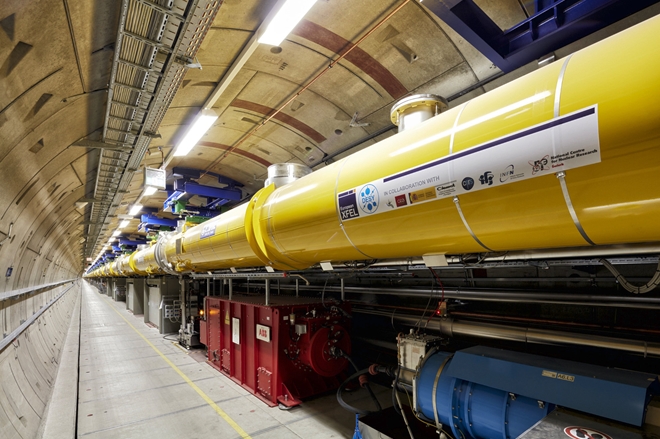European scientists introduce powerful Hamburg's X-Ray Laser
Scientists anticipate that the laser will lead to fundamental discoveries related to natural science, energy, medical treatments, the chemical industry, and the creation of new or improved materials. The massive, 3.5 km long laser has been likened to a giant microscope, accelerating electrons to incredible speeds and then producing very brief flashes in the x-ray range, illuminating matter and material processes down to the atomic level.
Along with Germany, which allotted over 50% of the funding for the project, European XFEL involves Russia (which contributed more than a quarter of the budget), Denmark, France, Hungary, Italy, Poland, Slovakia, Spain, Sweden, and Switzerland.
 |
Commenting on the tremendous length of the laser and the reason for this, Professor Robert Feidenhans'l, the project's managing director admitted that "yes, it's actually very big. It's about 3.5 km in total. It starts at Bahrenfeld, a special part of the city here in Hamburg; then you have a 2 km accelerator, where you accelerate the electrons. Then you have another 1.5 km where the x-rays go along."
Accordingly, the professor noted that one of the laser's tasks will be in energy research – studying how to improve the efficiency of energy use. "Photosynthesis is one of them, but there are many others. It can be used for batteries, catalysis, and other places where you can follow the fundamental chemical and physical processes in real time and see what actually happens."
Alongside their new x-ray laser, the professor noted that the team at European XFEL has also developed a high-powered optical laser, capable of heating material to extremely high temperatures and pressures, "similar to what you have in a star or an exoplanet." This will enable scientists to "see the material while it's at very high temperature, and high pressure. But it's not it's not the exabeam itself that heats it up; it's done by a powerful external optical laser."

